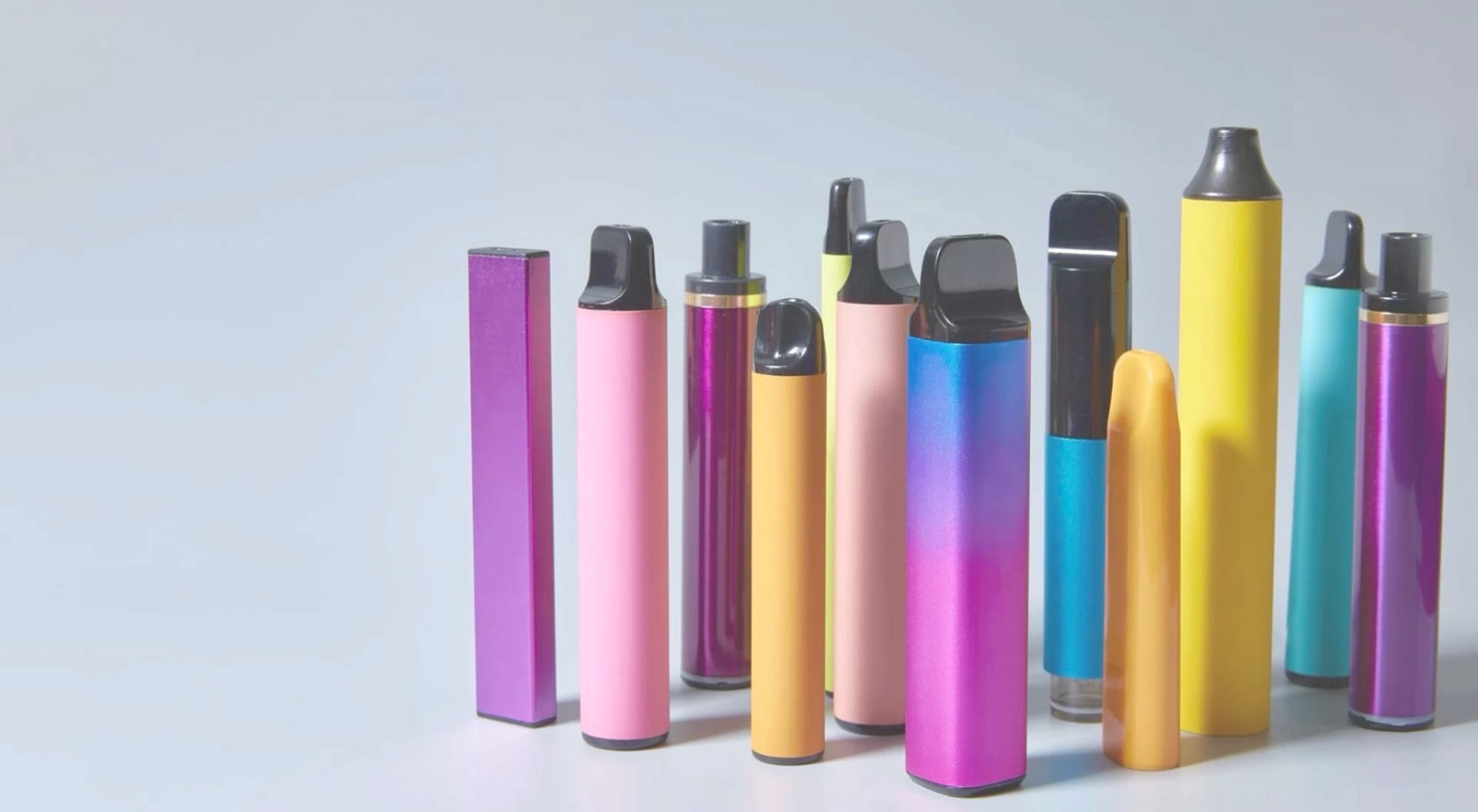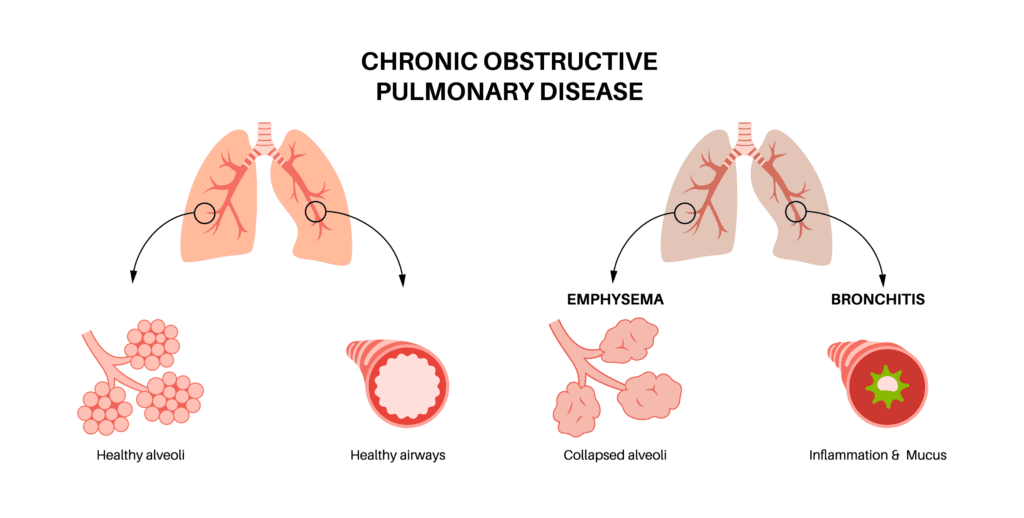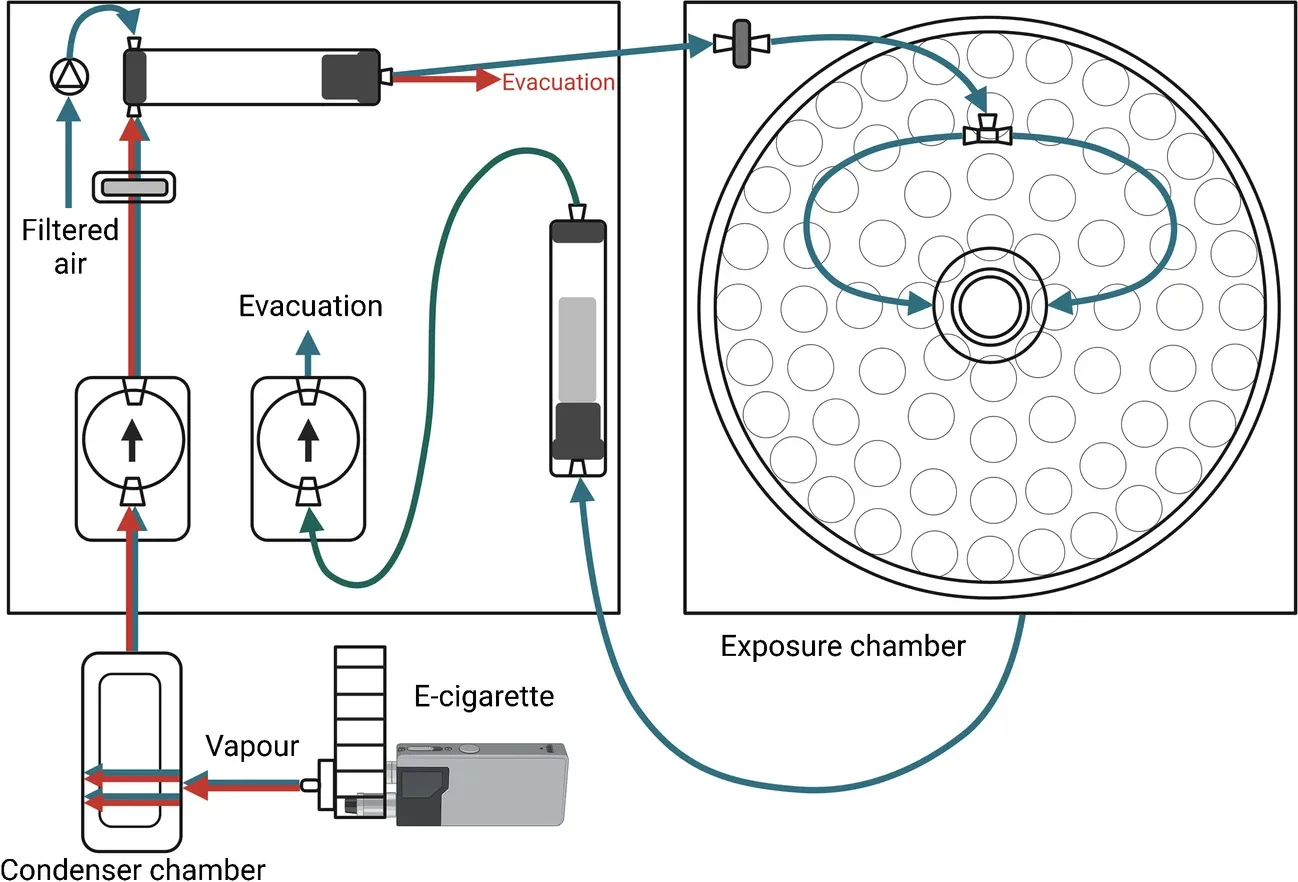The Chemistry Behind Vapes

In a nutshell
During the shelf life of e-liquids and when they are vaporised, the components of the liquid interact, oxidise and generate harmful by-products. These are often hard to identify for they differ from puff to puff, liquid to liquid and vape to vape. The sheer number of commercial e-liquids out there also make it hard to identify and study all the chemical compounds you could be exposed to. As a result many of the chemicals in vapes remain unidentified.
Nicotine - more than just addictive
Nicotine is the main addictive substance in vapes, and it's not harmless. In-vitro studies have show its cytotoxic effects by showing how it damages cells by increasing oxidative stress by creating imbalance of free radicals and antioxidants that neutralise them. This triggers inflammation in the lungs, which contribute to diseases like COPD (chronic obstructive pulmonary disease) which is particularly concerning for developing lungs.

Nicotine is also known to change form in the body and these different forms of nicotine are absorbed in different ways. Nicotine's solvent nature also further complicates things for it can exist in protonated and unprotonated (free base) form. In more acidic conditions nicotine exists in its protonated form and as a result doesn’t cross the membrane as rapidly. By increasing the pH of vapes, which many companies are doing, they facilitate more rapid pulmonary absorption. The sharp sensation noticed when the vapour makes contact with the back of the throat is also due to this unprotonated nicotine for it is more volatile and deposits faster in the upper respiratory tract.
Heavy Metals in the Mix
The increase in popularity of reusable vapes, and the ban on disposable vapes in June, has raised concerns because of the fact that reusable vapes have been found to have more heavy metals present in their vapour like lead, nickel, chromium, and arsenic. These come from the heating element of the vape which degrades over time due to repeated heating and cooling. These metals can end up in your lungs and bloodstream and can trigger blood clotting and exacerbate cardiovascular disease. Lead is a known neurotoxin and is harmful to brain development, while arsenic has been used throughout history as a poison.
Flavourings
There are over 7,000 unique vape flavours available resulting in a wide variety of possible combinations. Most of the limits of these flavouring components that are used are meant for when they are in food products and being ingested not vaporised and inhaled. There are few studies examining the effects of exposure to these flavouring by inhalation. For example; saccharide is used to make the flavours sweet but has recently been found to degrade when heated producing more harmful aldehydes, diacetyl (used in buttery or sweet flavours) has been linked to serious lung conditions and benzaldehyde (a fruity flavouring) can irritate the lungs and airways. The production of these also increases with the age of the heating element so the increased popularity of reusable vapes becomes more of a concern.

Solvents and Their By-products
The solvent used in vape liquids is either propylene glycol (PG) or glycerol (vegetable glycerin). They are used to produce the fog like vapour simulating the combustible tobacco smoke and carry the flavourings, nicotine and the many other chemical components. Again, we are more commonly exposed to PG and glycerol via our skin for they are used in many creams so there are misleading thresholds. Both of these compounds can pyrolyse (thermally decompose in limited oxygen) and form carbonyl compounds and aldehydes like formaldehyde and acetaldehyde which contribute to health risks.
These have both been classified as cancer-causing chemicals in humans (group 1) by the International Agency for Research on Cancer (IARC) due to the fact they increase genomic instability by interfering with DNA replication and repair due to its reactive aldehyde group. As well as causing nasal and sinus cancer, formaldehyde has also been found to cause nasal tumours in industrial workers who have been exposed to it for some years. This makes long term studies on the effects of formaldehyde when vaping crucial. Acrolein, another aldehyde, has also been found to cross the blood-brain barrier and effect brain function leading to a decline in cognitive abilities, an effect which is extremely alarming for the younger generation whose brains are still developing.

So, what’s the takeaway?
It is extremely hard to identify all the chemicals one is exposed to when vaping due to the amount of variables that effect their production. For example power and catalytic properties of the coil, design of the vape itself, airflow and potential overheating to name a few. Furthermore, a recent study showed there to be a 750-fold difference in total aldehyde production from different vapes using the same vape-liquid.
The truth is, there’s still a lot we don’t fully understand about vaping and its effects. While marketed as a safer alternative to smoking, vaping introduces a lot of under studied chemicals and until more long-term studies have been performed, it should be made clear that vaping is not without risk.